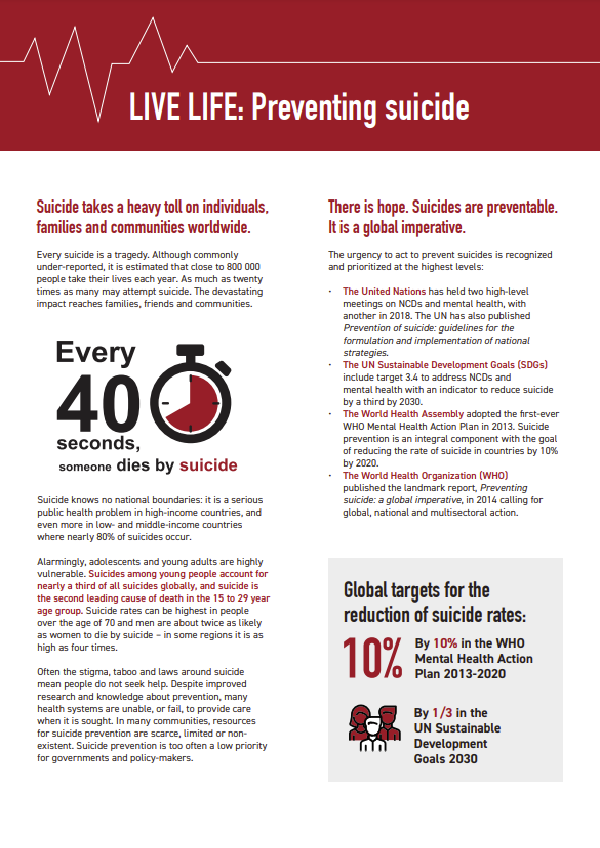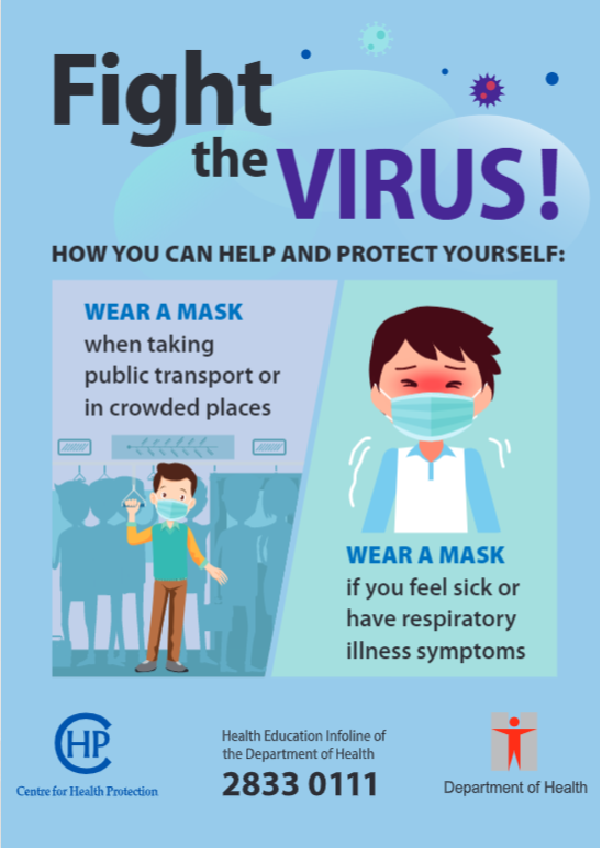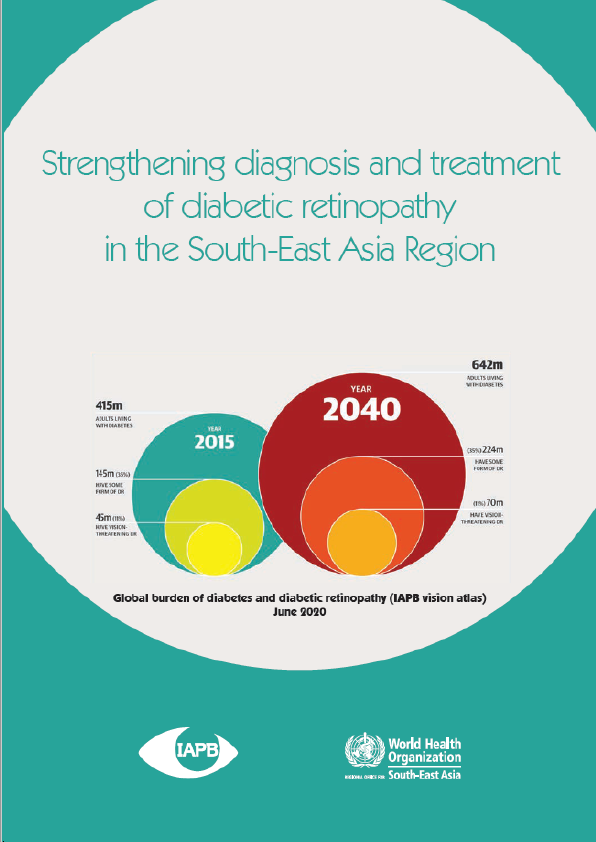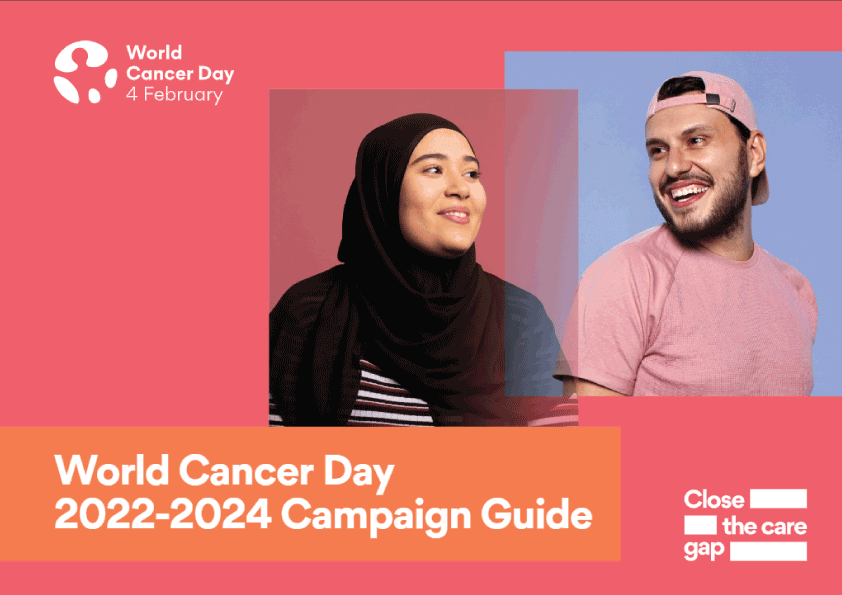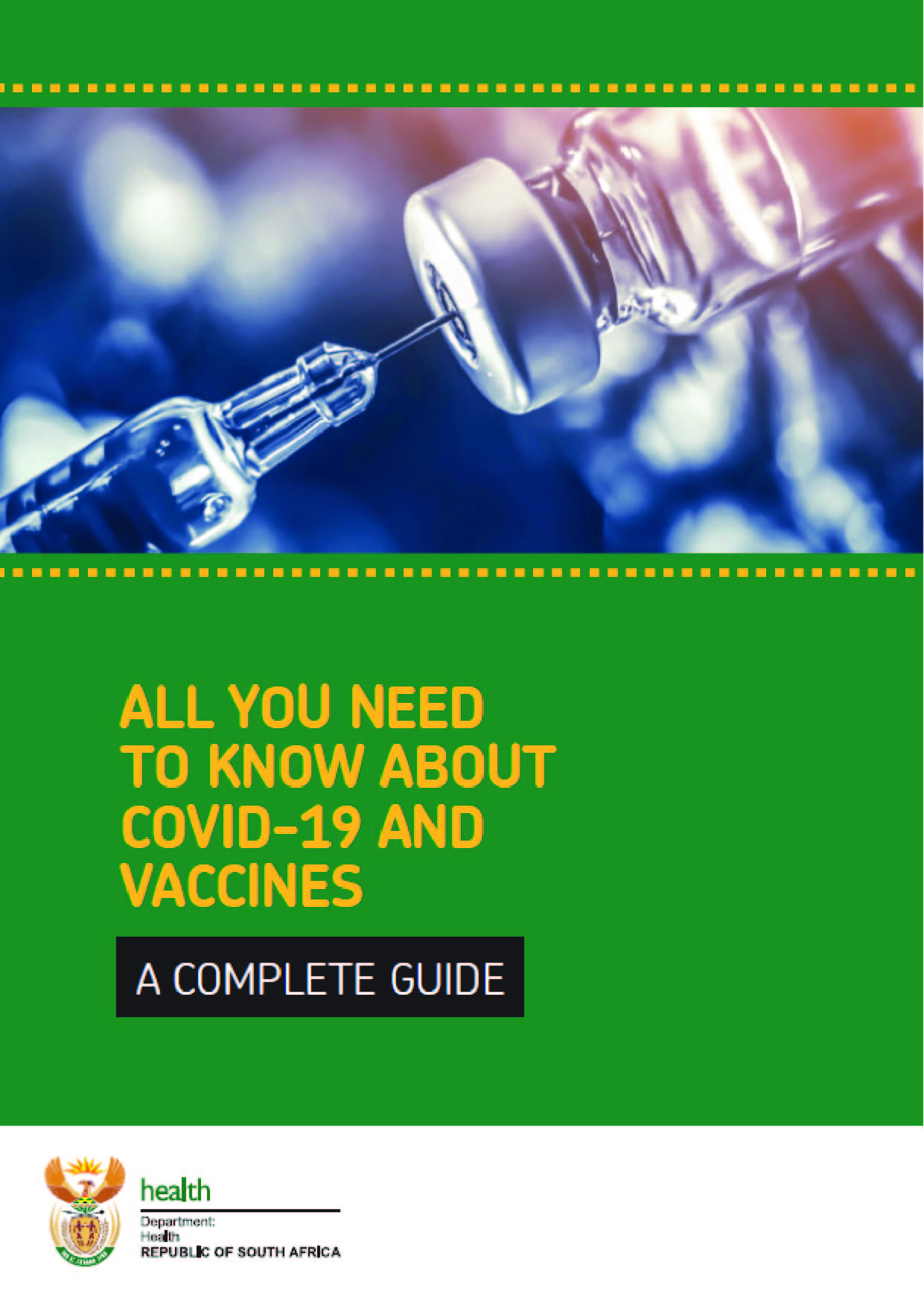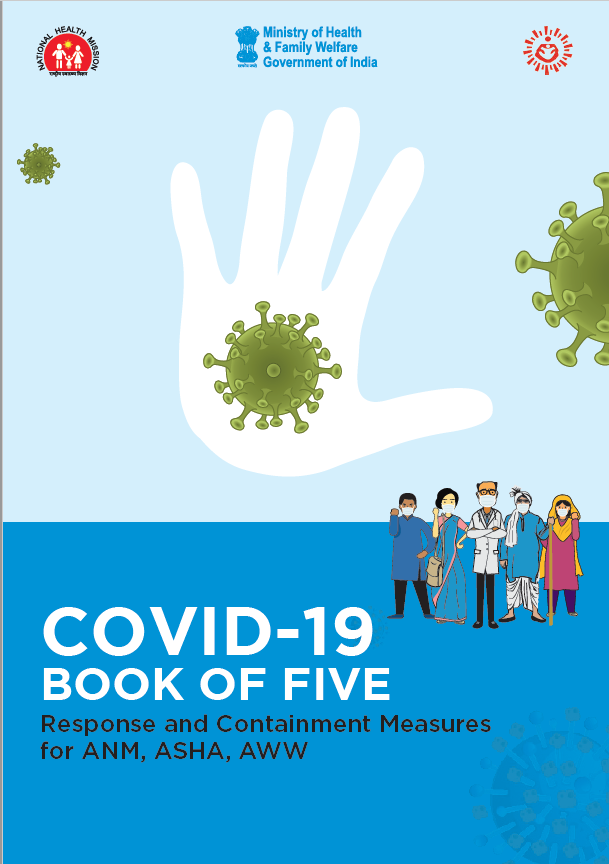Suicide takes a heavy toll on individuals, families, and communities worldwide. Every suicide is a tragedy. Although commonly under-reported, it is estimated that close to 800 000 people take their lives each year. As many as twenty times as many may attempt suicide. The devastating impact reaches families, friends, and communities.
There is hope. Suicides are preventable. It is a global imperative.
The urgency to act to prevent suicides is recognized and prioritized at the highest levels:
- The United Nations has held two high-level meetings on NCDs and mental health, with another in 2018. The UN has also published Prevention of suicide: guidelines for the formulation and implementation of national strategies.
- The UN Sustainable Development Goals (SDGs) include target 3.4 to address NCDs and mental health with an indicator to reduce suicide by a third by 2030.
- The World Health Assembly adopted the first-ever WHO Mental Health Action Plan in 2013. Suicide prevention is an integral component with the goal of reducing the rate of suicide in countries by 10% by 2020.
- The World Health Organization (WHO) published the landmark report, Preventing suicide: a global imperative, in 2014 calling for global, national, and multisectoral action.
Suicide prevention takes leadership and will. All sectors of society must work together. It can be done.
Every sector of society has a role to play. Alongside health and mental health professionals and organizations, there are critical roles for schools, businesses, community and religious leaders, the social welfare and judicial systems, and the media.
National and regional governments need to mobilize and coordinate the various sectors and define a culturally-specific response through a national strategy that aims for at least a 10% reduction in the suicide rate initially, as agreed in the WHO Mental Health Action Plan 2013-2020, and a reduction by one third by 2030 according to the SDGs. A strong health system and universal health coverage are fundamental to improved mental health and suicide prevention.
Global, national, and community efforts are helping to prevent suicide
World Suicide Prevention Day: Organized by the International Association for Suicide Prevention (IASP), World Suicide Prevention Day on 10 September recognizes suicide as a major public health problem. It has spurred global, national, and local campaigns that are raising awareness and reducing stigma around the world.
National suicide prevention strategies: In recent decades, and particularly since 2000, many national suicide prevention strategies have been developed. As of 2014, there were 28 countries known to have national strategies demonstrating commitments to suicide prevention, and the number is increasing steadily.
Awareness about suicide and its prevention: Training and education on suicide prevention are increasing in schools, workplaces, military environments, and prisons. National suicide prevention organizations and centers work to support research, raise awareness, and advocate for policies and interventions in many countries and communities.
